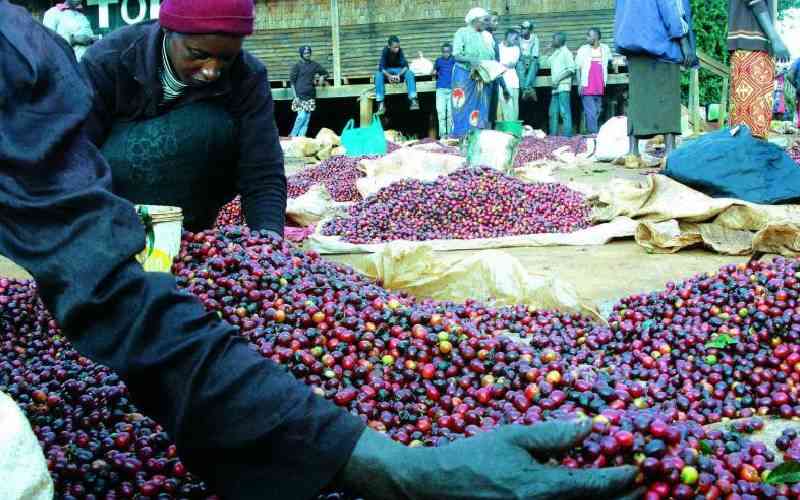
Annastacia Kimtai KCB Director, Retail Banking
NAIROBI, KENYA: Kenyan millennials are a worried lot. This is despite an overwhelming optimism towards realising their personal goals, beyond what their parents were able to achieve.
For millennials – the largest percentage of the Kenyan population – the absence of an adequate savings buffer to cushion against job losses or other financial shocks is proving to be unsettling.
The reason? Recent findings published in a research co-sponsored by KCB Bank and Oxygene Marketing Communications Limited suggest that one in every two millennials living in Kenya are pointing an accusing finger at debt as the impediment to investing and saving.
And it is easy to understand why. The high cost of living in the country, whether by choice or circumstance, is a reality for young Kenyans today.
For millennials financial wealth and the ability to provide for their families are the primary bellwethers for financial stability. Surprisingly, millennials are aware that financial responsibility – and a strong savings culture as an important factor – would give them a better future.
Yet building a comfortable savings buffer comes fifth in a litany of priorities that has education, getting married, starting a family and financial stability, all ranked in that order.
On a lighter but related note, an interesting piece of research from Innovations for Poverty Actions (IPA) anecdotally says that informal savers cite an important need to protect savings from misappropriation by other members of the household, particularly spouses!
On a more serious note, the low savings culture among Kenyan youth feeds into a wider national narrative.
For many years, Kenya’s national savings as a proportion of the country’s income – as measured by the Gross Domestic Product (GDP) – has consistently lagged behind similar sized economies across Africa.
In 2015 Kenya’s gross national savings stood at 12.7 per cent of GDP, well below the continent’s average of 14.7 per for similar sized economies. But if the International Monetary Fund (IMF’s) projections are anything to go by, Kenya’s national savings will surpass the average for countries of a similar size.
The IMF predicts that at 16.1 per cent, Kenya’s savings rate will exceed Nigeria’s (13.1 per cent) match Ghana’s (16.1 per cent) but fall short of South Africa (16.3 per cent) and the global average (17.53 per cent).
This is a welcome change to a distressing narrative. Largely because savings are good.
Countries with a high savings rate are able to withstand financial shocks and channel more funds towards critical sectors of their economies.
Stay informed. Subscribe to our newsletter
But building this resilience is steeped in a culture of saving that is mirrored at both the macro and micro economic levels.
Regulatory policy will continue to play a big role in mobilizing savings within the Kenyan economy. Some analysts for instance, have drawn correlations between the rise in Kenya’s national savings rate and the recently enacted interest rate caps law.
The resulting shrinkage in credit extension to households and small businesses continues to fuel the level of deposits held in banks and other financial institutions.
But one thing is for sure, Kenya is reaping the fruits of accelerated financial inclusion over the last decade.
The ubiquity of the mobile phone and its deep linkages to the financial system has seen more Kenyans today than any other time in history access financial services.
This is why. IPA point out that despite their low incomes, individuals in developing countries save using a wide variety of informal savings devices like illiquid rotating savings (merry go rounds) and credit associations (Chamas).
Researchers have widely noted the popularity of these informal devices and an attendant puzzle: these devices are often risky, complex, and costly when compared to simple alternatives, such as storing savings at home.
So enter the mobile phone, and affordable and personal way to save, transact and borrow with dignity.
Research from FSD Kenya show that the customer base for mobile, banking and telecommunications products have grown at annualised rate of 20 per cent or more since 2005. M-PESA – the mobile money solution from Safaricom - realised a 60 per cent per annum growth between 2007 and 2014.
Innovative partnerships such as MyKASH have enabled customers to borrow, make transactions and save.
As companies continue to introduce new offerings in these spaces to the market, the customer base has continued to growth strongly, far above population growth rates.
Remarkably, the market has seen three-year growth rates of over 100 per cent, even in recent time with mobile money account registration peaking at 133 per cent into 2010. The continued strong growth across the various product sets suggests availability of latent demand to be further tapped.
Which is why financial service providers such as KCB continue to innovate to meet this growing need. KCB recently introduced a new savings account aimed at driving up the savings culture on the country.
KCB Goal Savings Account allows customers to set and lock a target, make deposits towards achieving that target over a specific period of time while earning a high interest determined daily. Customers can lock their savings between a minimum period of six months and a maximum of five years.
The minimum opening balance is set at Ksh1,000, giving room for a wide scope of customers above 18 years of age.
The long term inculcation of a savings culture in Kenya will take a concerted effort that will require the government, policy bodies, private sector and consumer groups to all play a deliberate part in the transformation.
The Writer is KCB Director, Retail Banking
 The Standard Group Plc is a
multi-media organization with investments in media platforms spanning newspaper
print operations, television, radio broadcasting, digital and online services. The
Standard Group is recognized as a leading multi-media house in Kenya with a key
influence in matters of national and international interest.
The Standard Group Plc is a
multi-media organization with investments in media platforms spanning newspaper
print operations, television, radio broadcasting, digital and online services. The
Standard Group is recognized as a leading multi-media house in Kenya with a key
influence in matters of national and international interest.
 The Standard Group Plc is a
multi-media organization with investments in media platforms spanning newspaper
print operations, television, radio broadcasting, digital and online services. The
Standard Group is recognized as a leading multi-media house in Kenya with a key
influence in matters of national and international interest.
The Standard Group Plc is a
multi-media organization with investments in media platforms spanning newspaper
print operations, television, radio broadcasting, digital and online services. The
Standard Group is recognized as a leading multi-media house in Kenya with a key
influence in matters of national and international interest.









